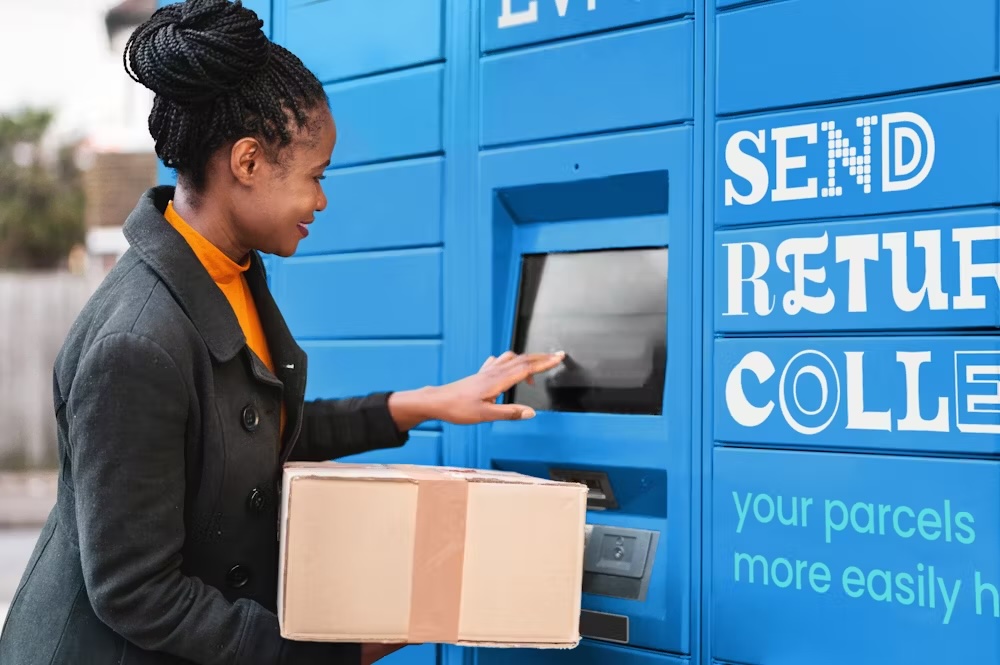Leading retailers promote their brands through owned and third-party channels and involve their customers in expanding brand awareness. They provide a good view of the company on social media and engage with customers visiting their websites, blogs and ‘about’ pages. Ideally, they are also seen to share customer feedback and reviews by any of these channels. By doing so, satisfied customers effectively help raise awareness of their brand’s successes, while constructive criticism from less satisfied customers may well prove helpful in reworking the way that products or retail services work.
In the Brand Engagement Dimension, RetailX researchers analyse how Top500 retailers reach out to their existing and prospective customers, provide ways for their customers to get in touch, and recommend products. They do so through 35 different metrics assessing performance in areas from social media presence and sharing to product page features and the time shoppers spend on their website. Data from RetailX Knowledge Partner SimilarWeb shows how often – and for how long – people visit Top500 websites. Additionally, data from RetailX Knowledge Partner Pi Datametrics shows how internet users search for different brands that sell in the UK.
The findings are grouped here through three key questions. First, how do Top500 retailers engage with customers? For this, the focus is on the communication channels that businesses make available to shoppers, and how they engage with them on their own websites.
Second, how far do retailers support customers in sharing products online? The focus is on the extent to which retailers support product reviews and ratings on both websites and mobile apps. Third, how easy do retailers make it for shoppers to check out? Research in this section takes into account the need to balance the ease of a guest checkout with the role of the ‘owned’ website in gathering data from opted-in customers, which is useful for building future relationships with those shoppers.
Finally, how often do shoppers search for retail brands that sell in the UK? The answer
to this question provides a useful measure of how well brands are communicating with their target audiences.
Table 7. The 20 brands that saw the BIGGEST growth in UK searches
“shopdisney”, for example, was searched 10x more in the year to August 2019 than it was in the previous 12 month
These 20 Top500 brand keywords enjoyed the biggest rise in searches in the 12 months to August 2019, measured as a percentage of their total in the previous year. Researched in partnership with Pi Datametrics
|
Keyword |
Total Searches |
Percentage Increase |
Rank |
|
shopdisney |
101,400 |
1163% |
1 |
|
lookfantastic |
484,300 |
672% |
2 |
|
victoria’s secret |
1,091,600 |
204% |
3 |
|
fendi |
985,500 |
169% |
4 |
|
tiffany & co |
891,500 |
155% |
5 |
|
wayfair |
9,861,000 |
151% |
6 |
|
dr martens |
2,792,000 |
147% |
7 |
|
yesstyle |
523,600 |
144% |
8 |
|
roman originals |
1,570,500 |
141% |
9 |
|
seasalt cornwall |
104,500 |
137% |
10 |
|
and other stories |
2,064,000 |
137% |
11 |
|
bareminerals |
207,100 |
134% |
12 |
|
flannels |
5,586,000 |
132% |
13 |
|
pavers |
827,500 |
131% |
14 |
|
lululemon |
1,178,500 |
129% |
15 |
|
weekday |
633,000 |
129% |
16 |
|
cotswold company |
523,700 |
129% |
17 |
|
bonmarche |
1,095,000 |
129% |
18 |
|
monki |
1,370,000 |
129% |
19 |
|
dior |
883,500 |
129% |
20 |
How do Top500 retailers engage with customers?
Retailers who support two-way conversations with existing and potential customers can both answer their questions and provide information and advice that may help secure a sale.
Communication channels
UK retailers continue to reach potential customers through a wide variety of channels. In 2020, the average Top500 retailer actively operates, or is available through, 9.6 communication channels, and a median of 10, where channels include direct-to-customer ones such as email and live chat as well as broadcast feeds on social networks. That’s similar to 2019 and up from eight channels in 2018. This year, 97% of Top500 retailers have a Facebook page, and 90% have an Instagram profile. Some 88% are on Twitter, 82% are on YouTube, 69% have a Pinterest account and 13% have a Snapchat account. Most flag up their social presence, with 88% linking to their social pages from the landing page. Almost half (46%) enable shoppers to share a product on social media. Of those that are on Twitter, the average Top500 retailer has 2.4m followers. But the average is likely to be skewed by those retailers with the largest followings, since the median retailer had 312,737 at the time the research was carried out in early 2020.
Live chat is available on 46% of Top500 websites – and this pops up on 11% of Top500 landing pages within a minute of a visitor arriving. Live chat on mobile is as yet less widely available, offered by only 8% of those with apps.
Visitors to 70% of Top500 websites can sign up to receive the newsletter from the landing page.
Engagement on retail websites
The average Top500 retailer’s website receives 8.8m visits a year and a median of 2.3m, according to data researched in partnership with RetailX Knowledge Partner SimilarWeb. Visitors spend an average of 324 seconds (5.4 minutes) and a median of 293s (4.9m) on Top500 websites. They visit an average of 9.8 pages and a median 7.1 pages. But almost a third (31%) of visits to the average website bounce –and therefore fail.
How far do retailers support customers in sharing products online?
Shoppers help boost awareness and trust of the products they are looking at online when they share them. Most retailers now feature simple product ratings and reviews on their websites.
Reviews, ratings and recommendations
Shoppers often read product reviews and ratings when they are deciding whether an item is right for them – or not. More than half of Top500 retailers feature product reviews (57%) and ratings (55%). Of retailers with mobile apps, 30% feature product star ratings on their mobile app. 5% enable users to illustrate their website review with an image. Some 8% of retailers with apps make it easy for shoppers to find the products they’re looking for by offering visual search.
Sharing products
More retailers now enable their customers to share the products they find on their websites with friends. In 2020, 40% of Top500 retailers do so, after a 14 percentage point (pp) rebound from 26% last year, which was an all-time low. Researchers had expected a continued reduction this year as retailers (and especially brands) turned their attention to selling through their social channels using new features from the leading networks. It seems, however, that despite a reduction in obvious social media links on product pages in the immediate aftermath of the 2018 Cambridge Analytica scandal, those links are now reappearing on websites that had removed them. Shoppers at four in 10 Top500 retailers are now seeing social media suggestion. The feature saw the fastest uptake in the trade and DIY tools and equipment sector, rising by 24pp to 50%. This is now the Top500 category where sharing with friends is most commonly suggested.
Retailers selling home and industrial equipment increased their use of this tool, which is found on 46% of websites in this category – 24pp more than in the previous year. A significant number of children’s toys and accessories’ retailers also added social sharing compared to last year, with 46% retailers enabling their viewers to share, up by 19pp on the previous year.
Social sharing is popular among those selling cosmetics, but less so among those selling groceries (-1pp to 38%) and consumer electronics (38%). Perhaps shoppers buying tools and toys are just more likely to have other people who are interested in what they are considering buying, whether that’s professional colleagues, fellow DIY-ers, or relatives looking for present ideas for children. Just 3% of the Top500 allow users to ‘Like’ their products using a social media plugin, a four percentage point drop on last year, when use of the feature was also at an all-time low. On mobile, 46% of those with apps enable users to share an item on social media.
How easy do retailers make it for shoppers to check out?
Retailers balance making it easy for shoppers to checkout and complete their purchase with gaining marketing information that they can use to communicate and build a relationship with their customer. Adding a social login or third-party checkout to their website can make checkout faster and increase conversion, at the cost to retailers of being more anonymous.
RetailX research found that shoppers must register before they buy at almost two-thirds (62%) of Top500 retail websites. Almost a third (31%) offer PayPal checkout – up by 4pp from 26% last year. Other checkouts are less popular: 9% enable checkout via AmazonPay, 9% through Facebook and 5% through Google checkout. Brand engagement normally means reaching customers before a sale takes place, although it also includes retaining a customer for his or her lifetime. It may be this consideration which means some retailers opt to keep control of the checkout, but of course such services generally take from the retailer’s margin as well. It would appear that with a growing number of retailers, this trade-off makes sense, presumably due to higher conversion rates when offering third-party checkout.
Looking in more detail at how the most popular of those options is used, researchers found retailers trading across all sectors added the PayPal checkout to their website. It was adopted most quickly among those selling consumer electronics (+14pp to 23% of retailers selling this category), fashion clothing (+8pp to 29%), cosmetics (+8pp to 31%) and home and industrial appliances (+8pp to 15%).
The smallest growth was in jewellery and sports and leisure footwear (both +2pp). That may be because the option is already widely used in sports and leisure footwear and in fashion footwear (both 36%), and in sports and outdoor equipment (35%). Those selling trade and DIY tools, as well as home and industrial appliances (15%), are the least likely to enable payment via PayPal.
How often do shoppers search for retail brands that sell in the UK?
Brand awareness of leading retailers can be measured by how often people search online for them. This can be viewed as both a proxy for the opportunity of future brand engagement and a measure of its historic success. RetailX Knowledge Partner Pi Datametrics analysed searches for retail brands on Google UK for the year to August 2019 and found that Google came out top, with 353.8m hits. Amazon came second, with 207.6m, followed by eBay with 197m. Following on were Argos (158m), Next (82.1m), John Lewis (59.5m), Asda (57.7m) and Tesco (54.7m). Asos (50.2m) and Debenhams (49.4m) completed the top 10.
The top 20 also included Screwfix (48.3m), New Look (43.8m), Marks & Spencer (43.6m) Sainsbury’s (42.7m), Sports Direct (41.3m), Currys (38.1m), B&Q (37.5m), IKEA (35.9m), Boots (35.6m) and Very (33.3m).
The analysis excluded some retail keywords – such as “apple”– that were likely to capture searches that were unrelated to a retail brand. However, it did include “amazon” despite the newsworthiness of the South American geographic region of the same name over the summer. That said, a search for “amazon fire” on Google UK currently returns almost exclusively hits for Amazon’s range of Fire products.
Looking at which retail brands saw the biggest gains in brand awareness, as measured through searches, Shop Disney enjoyed a 1,163% rise in searches, to 101,400, followed by Look Fantastic (+672% to 484,300), Victoria’s Secret (+204% to 1.1m), Fendi (985,500), and Tiffany & Co (+155% to 891,500). Other interesting results included Wayfair, which gained 155% more searches, to 9.9m, while searches for Flannels grew by 132% to 5.6m.




